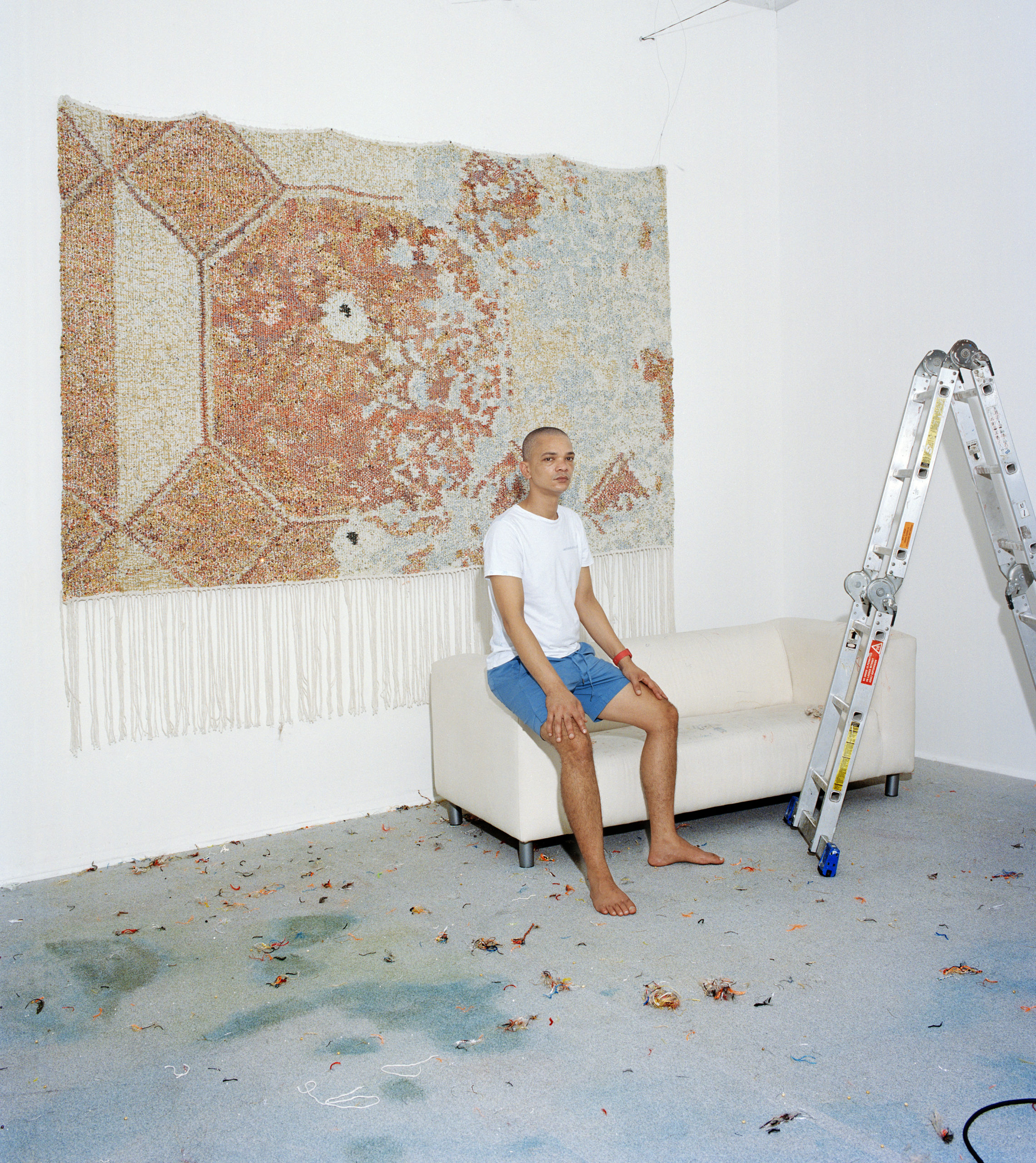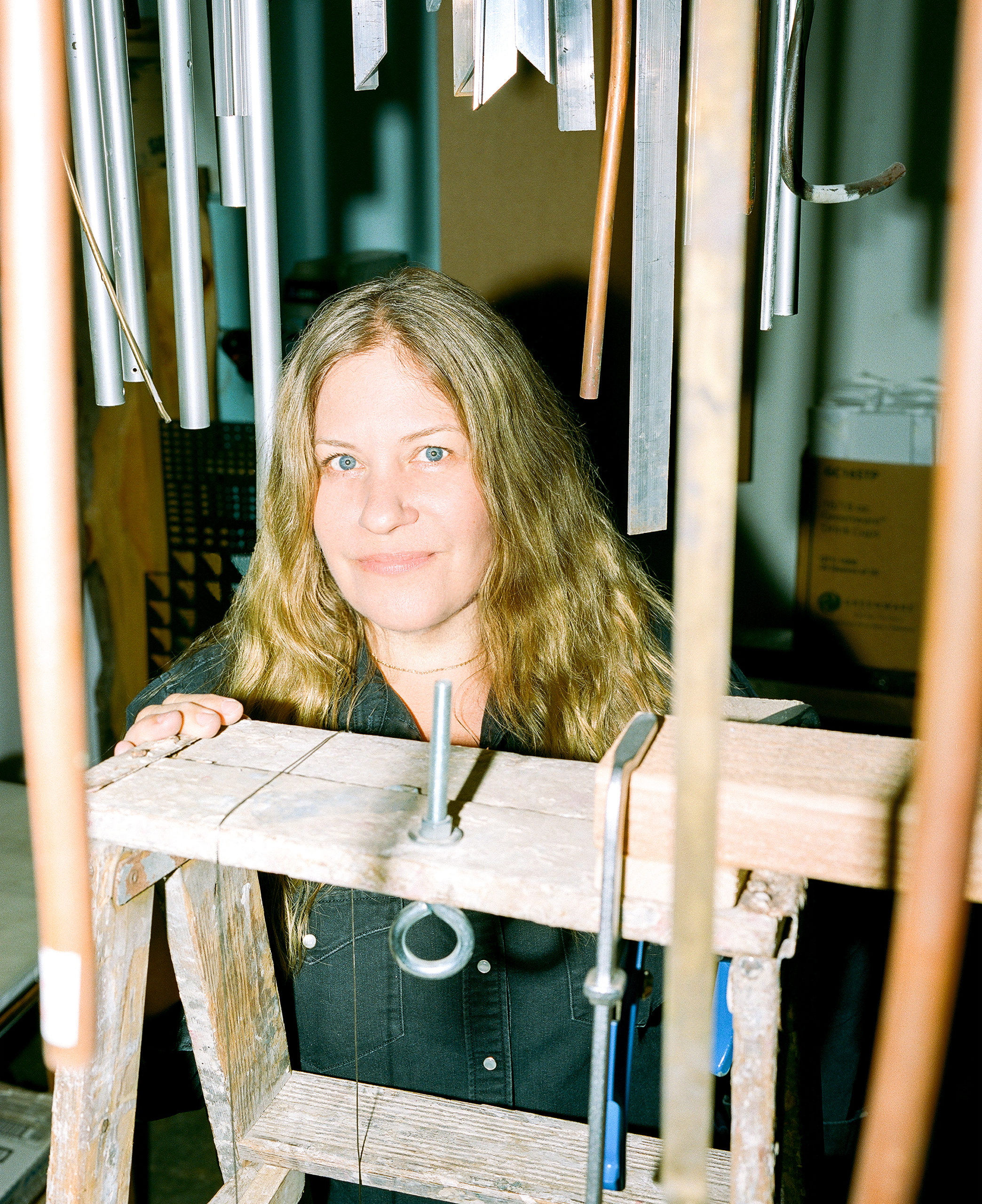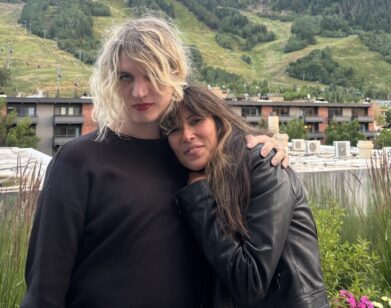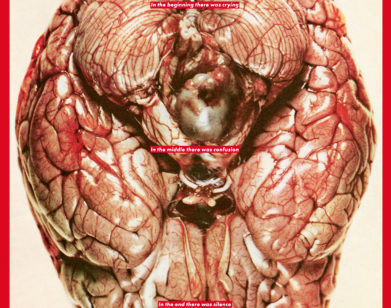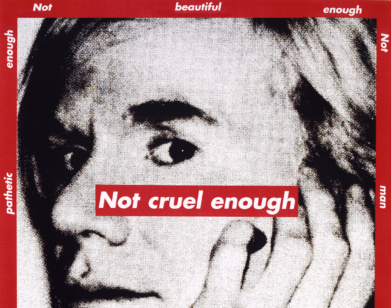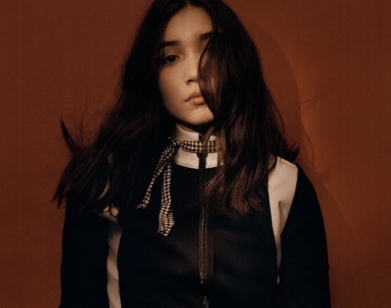ART!
Meet Eight Artists Reshaping the 59th Venice Biennale
If this year’s roster of artists for the 59th Venice Biennale looks a little different than previous iterations of the longest-running survey of contemporary art on the planet, that’s because significantly—and finally!—the majority of the participating artists are women or gender-nonconforming. That much-needed burst of energy is thanks largely to this year’s curator, Cecilia Alemani, who stacks the deck in favor of artists exploring identity, subversive states of being, technology, and an aesthetic rebuff to the tired tropes of straight white males of yore. “The artists in the show portray a world where everyone can change, be transformed, become something or someone else—a world set free,” Alemani explains. “The show looks at art and artists as travel companions, who can help us imagine new modes of coexistence.” To celebrate this sense of freedom, we spotlight eight artists showing their work this spring in the most beautiful city on the planet.
___
CHARLINE VON HEYL
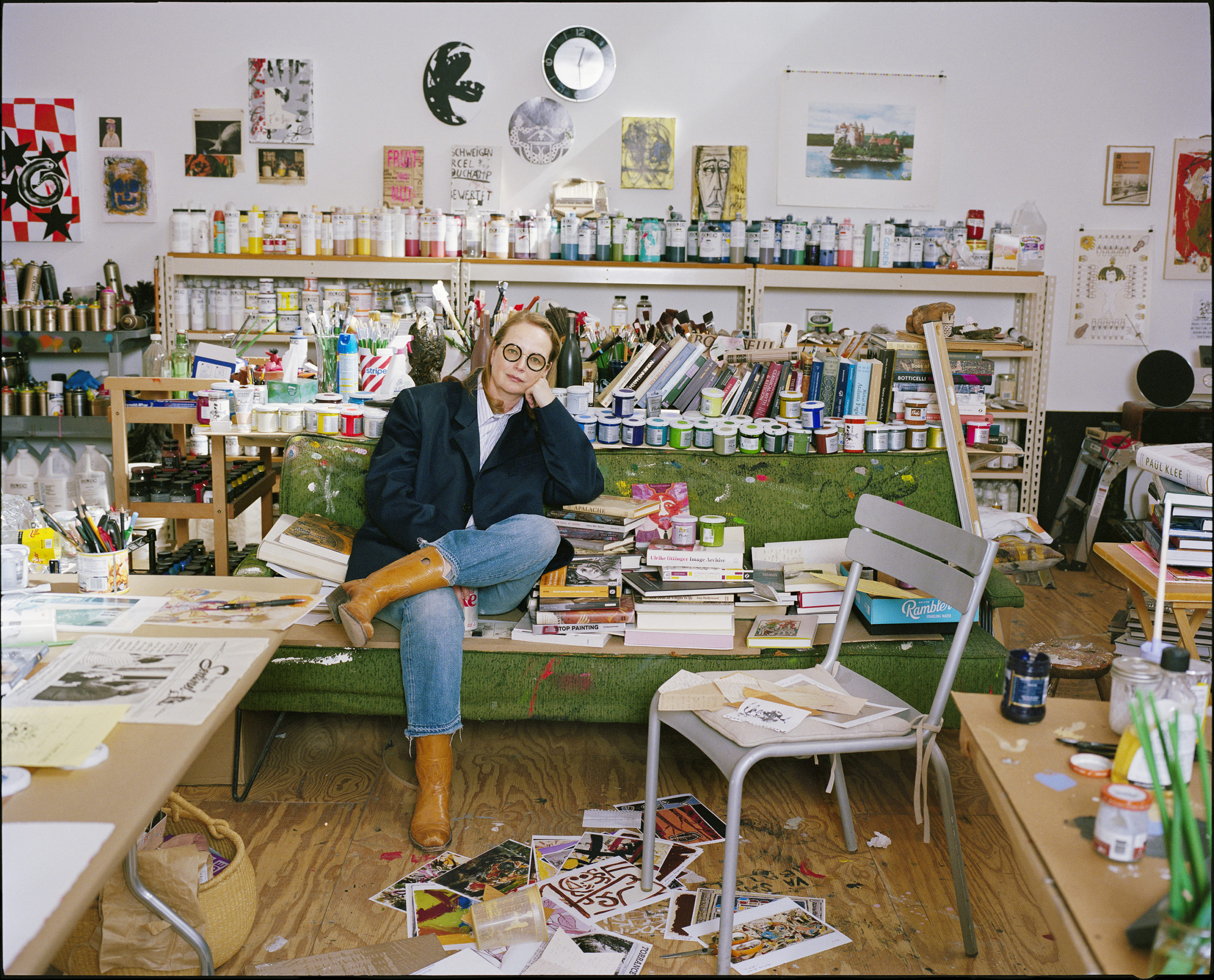
Photographed by Matthew Busch.
Age: 61 Medium: Painting Birthplace: Mainz, Germany Hometown: New York City and Marfa, Texas
Describe your studio/work practice.
A friend once compared me to a lizard: very still for long stretches of time and then suddenly acting with great speed. That pretty much sums it up.
What’s the biggest risk you’ve taken as an artist?
I guess it takes a certain courage to become an artist to begin with, even though it didn’t seem to be much of a choice at the time. And with painting, you have to be ready at all times to sacrifice something pretty good for something maybe better, and that doesn’t always work out and then it kind of hurts. Especially when you realize that what you thought was pretty good was actually great. But I wouldn’t call those risks. Some people take real risks.
Which artists influenced you the most at the start of your career?
There was a very powerful painting scene in Cologne through the ’80s. [Martin] Kippenberger was looming large and setting the tone, Albert Oehlen made awesome paintings, Don Van Vlietmade a show there that I’m still thinking about, and there were endless discussions about Gerhard Richter’s approach. But when I was ready to have my first show I was interested in a different discourse, so I joined Galerie Nagel, which had just started in 1990 with artists like MichaelKrebber, Cosima von Bonin, Andrea Fraser, Mark Dion, Renée Green, Christian Philipp Müller, and Fareed Armaly. That was not an easy time, but it was important. It was only when I came to the U.S. that I really found my posse and my painter friends.
How has the art world changed in the past few years?
The art world has become even more grotesque where it was grotesque before. But at the same time, I see a lot of artists out there making important and original new work. They need to have more money and freedom and studios and student debts. And we need more collectors and curators with courage and visual and emotional intelligence.
What can art do or offer that is beneficial in the current apocalyptic state of the world?
It can be an escape or a protest or a warning. It can give something instead of take something away. It can stop you in your tracks. It can make you hear your own thoughts. Or get out of your own thoughts. Or give you new thoughts. It can agitate or delight or satisfy. It can be a revelation. It cannot change the world but the world would be awful without it
___
JADE FADOJUTIMI
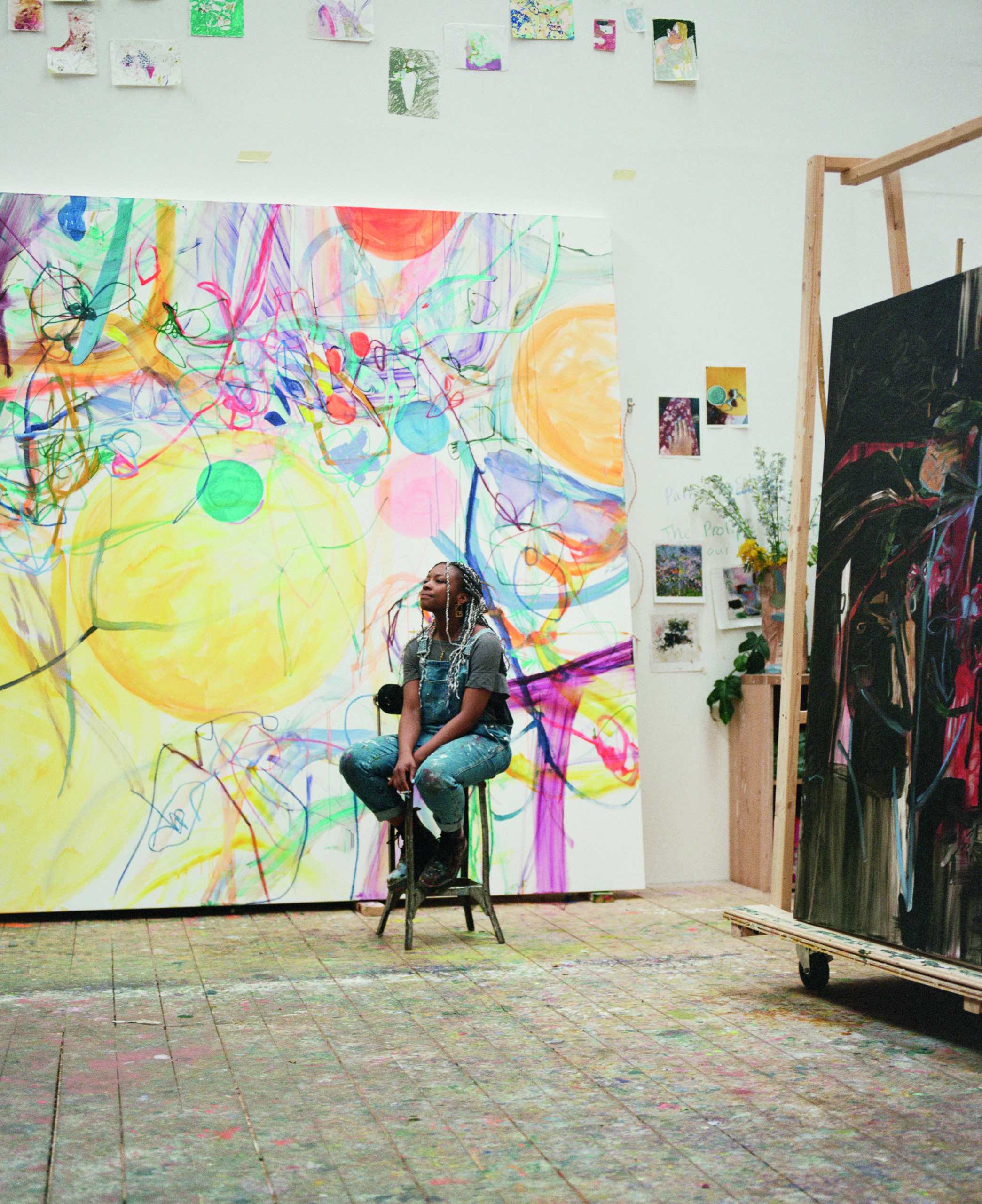
Photographed by Valentin Hennequin.
Age: 28 Medium: Painting Hometown: London
Describe your studio/work practice.
Painting, and the way I compose the space around me, are the ways I have a conversation with identity and question what that means. My practice involves delving into myself and my experience in the hope of witnessing my core. For me, the core can be described as our true identity undisturbed by the noise and distraction of the world. Painting becomes a catalyst for my character to blossom, revealing itself for a brief moment in the form of environments, hoping to provide a sense of belonging.
What’s the biggest risk you’ve taken as an artist?
I’m all about taking calculated risks with my studio and my paintings. I’m always trying to take leaps to energize myself and the work. Constantly experimenting with painting always feels like a risk, but I never want to hold back from what the work could be just because people are watching.
When was your first trip to Venice?
In 2017 to see the Biennale for the first time. I was supposed to go for only five days, but I ended up staying for ten, because the magic of the city stole my attention. I bathed in the art and history of the city, writing and drawing and going to the same bar every day, meeting new people.
Which artists influenced you the most at the start of your career?
Laura Owens, Makiko Kudo, Yoshitomo Nara, Phoebe Unwin, Helen Frankenthaler, Henri Matisse, Claude Monet, John Singer Sargent, Marc Chagall, and David Hockney among others.
What is your biggest influence outside of the art world?
Most of my influences come from my own life. It was my initial interest in Japanese animations and soundtracks that sparked my love for painting. I’d spend hours absorbing the stories of these worlds, and experiencing feelings that felt abstract. At the time that could only be translated through painting. I also take a lot from my immediate surroundings, including my studio and home space, particularly the clothes, furniture, and objects from my childhood that make up my environments.
If you could show with any artist living or dead, who would it be?
Claude Monet.
___
IGSHAAN ADAMS
Age: 39 Medium: Textiles, sculpture, installation, performance Hometown: Cape Town
Describe your studio/work practice.
A large and open industrial space with a lot of light, that continually changes as new and older work fills the space. Like a beehive, it’s always bustling, with everyone performing their own task. The local radio station always playing popular music, while three languages are spoken: Afrikaans, English, and Xhosa. Dancing and outbursts of laughter are not uncommon. My practice is labor intensive with a community that has formed around it. I work with a team of assistants who do most of the weaving for me. I remain rooted in my community. The stringing of the beads, before they are woven into the tapestries, is done by about half a dozen families in Bonteheuwel. I also employ a number of my family members.
What’s the biggest risk you’ve taken as an artist?
The performance I did with my father back in 2014. The risk was in making public a Muslim ritual (the burial ritual) that some believe should be kept private and so it is a very sensitive subject. I know the Quran encourages all believers to reflect on your dying moment, to consider your grave in every moment as the only reality, and so part of the intention was to give the viewer this opportunity. At the same time I wanted the opportunity to kill the immature and somewhat fixed view of my father I had, and the version of myself that remained frozen in fear. I wanted to reset our relationship so we could repair the damage of our history together.
Which artists influenced you the most at the start of your career?
Nicholas Hlobo, Louise Bourgeois, Nandipha Mntambo.
What are your biggest influences outside of the art world?
I spend a lot of my downtime back in the community where I grew up, and that means time with my extended family: cooking, eating, laughing. I try to think about how I can express these joyful, silly, and sometimes dark, experiences in my art practice.
What can art offer that is beneficial in the current apocalyptic state of the world?
I feel that my art practice has “healed” me. The performance I referred to earlier has undoubtedly reset the relationship I have with my father, and this has rippled out to our broader family relationship. Throughout history, art has always been there to “correct” things on an emotional, spiritual, human level. Before language, before medicine or technology, drawing came first.
___
BARBARA KRUGER
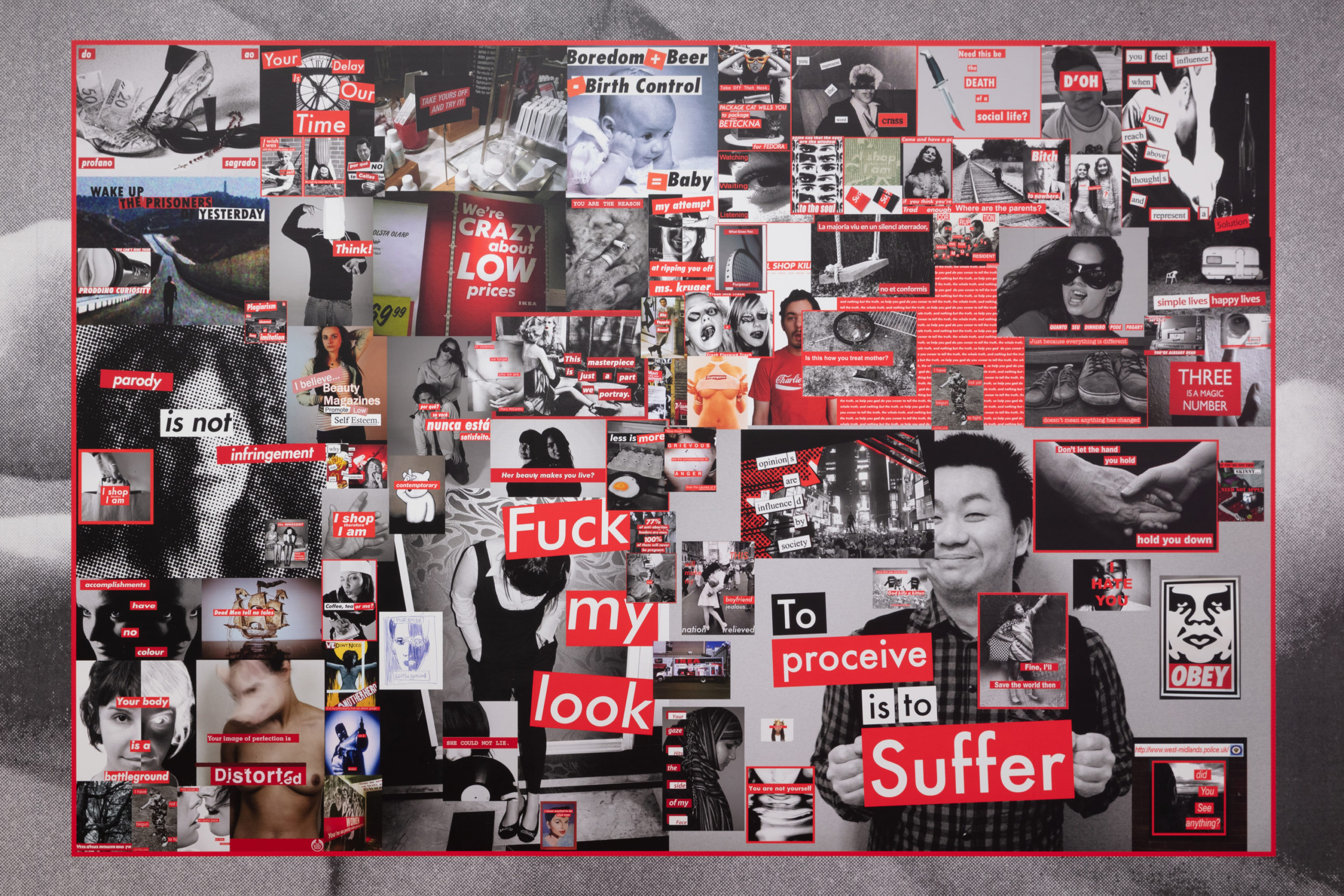
“Untitled (That’s the way we do it),” 2011/2020. Courtesy of the artist and Sprüth Magers. Installation view (detail): The Art Institute of Chicago, 2021.
Age: 77 Medium: Photography, sculpture, graphic design, architecture Hometown: Los Angeles
“As time goes by, I’ve been increasingly engaged with spatializing my ideas: working with architecture and the built environment to upscale (or downscale) the meanings I’m trying to make with pictures and words—both moving and still. This has increasingly involved the use of sonics and their abilities to build resonant moments. My biggest risk has been to try to call myself an artist. Without any undergraduate or graduate degrees, my ability to define myself through my work was incremental and marked by both doubt and surety. A very different kind of approach compared to the current professionalization of the arts with its menu of stylistic choices and skillsets. My work is, at times, detonated by taking another breath, by the repetitions of the everyday and how that everyday is constructed by both the brutal hierarchies and punishments of global events and the more localized tenderness and kindnesses that are either offered or denied. I try to make work about how we are to one another.”
___
ROSEMARIE TROCKEL
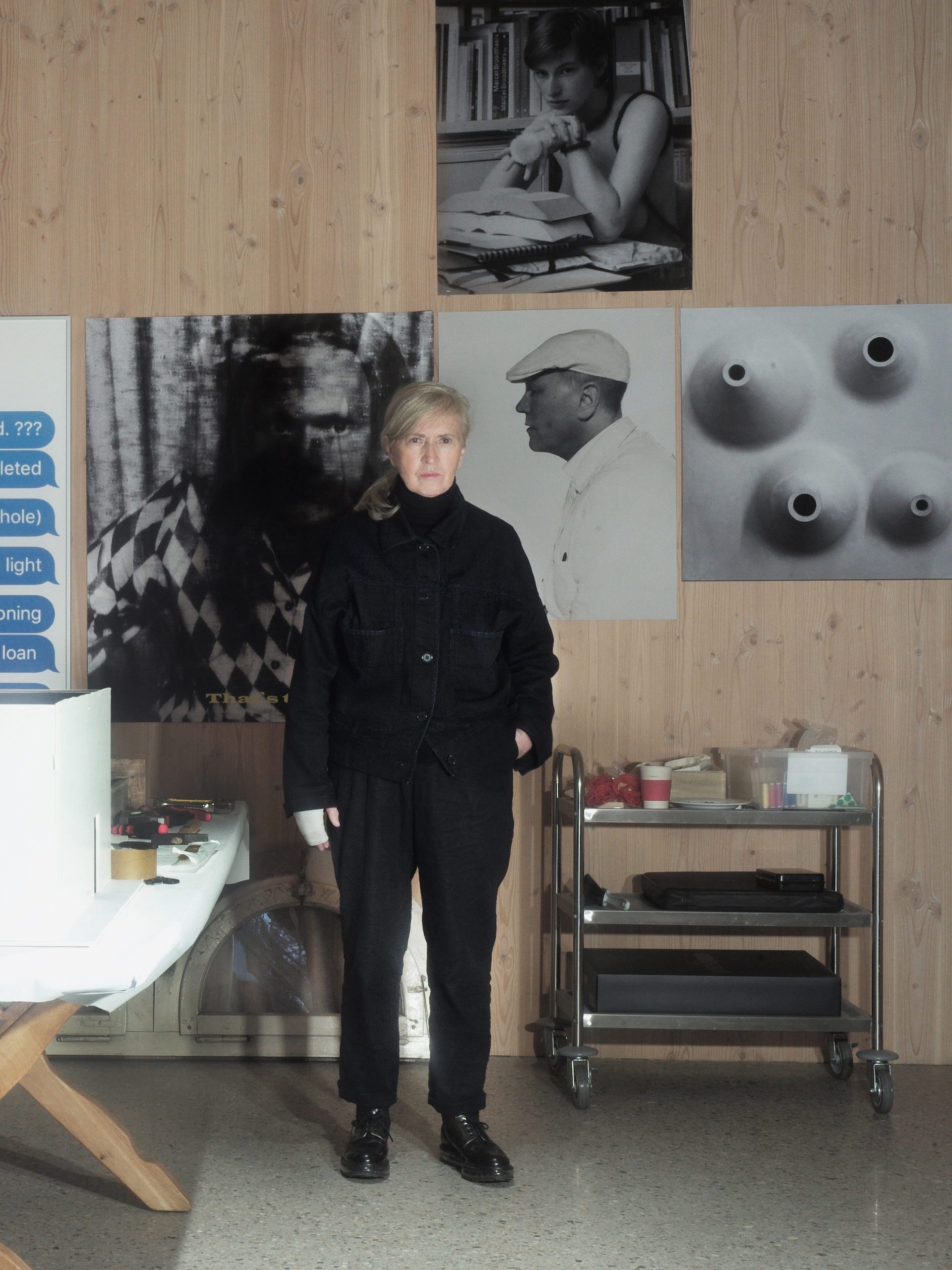
Photographed by Curtis Anderson.
Age: 69 Medium: Wool work, conceptual paintings, photography, installation, and sculpture Hometown: Berlin and Cologne, Germany
“I have always been interested in critical distance and materiality at once, in conceptual thought and sensual practice at once. I always wanted to do something that might in the end be both: conceptual and sensual, deconstructive and constructive, a critical demystification and a positive statement, creating a placeless place of questioning and simultaneously presenting something that might be an answer to questions which nobody has posed. Of course this is not at all easy and failure is normal in this sphere. But nevertheless, I persist. In the end, the work has to stand for herself.”
___
P. STAFF
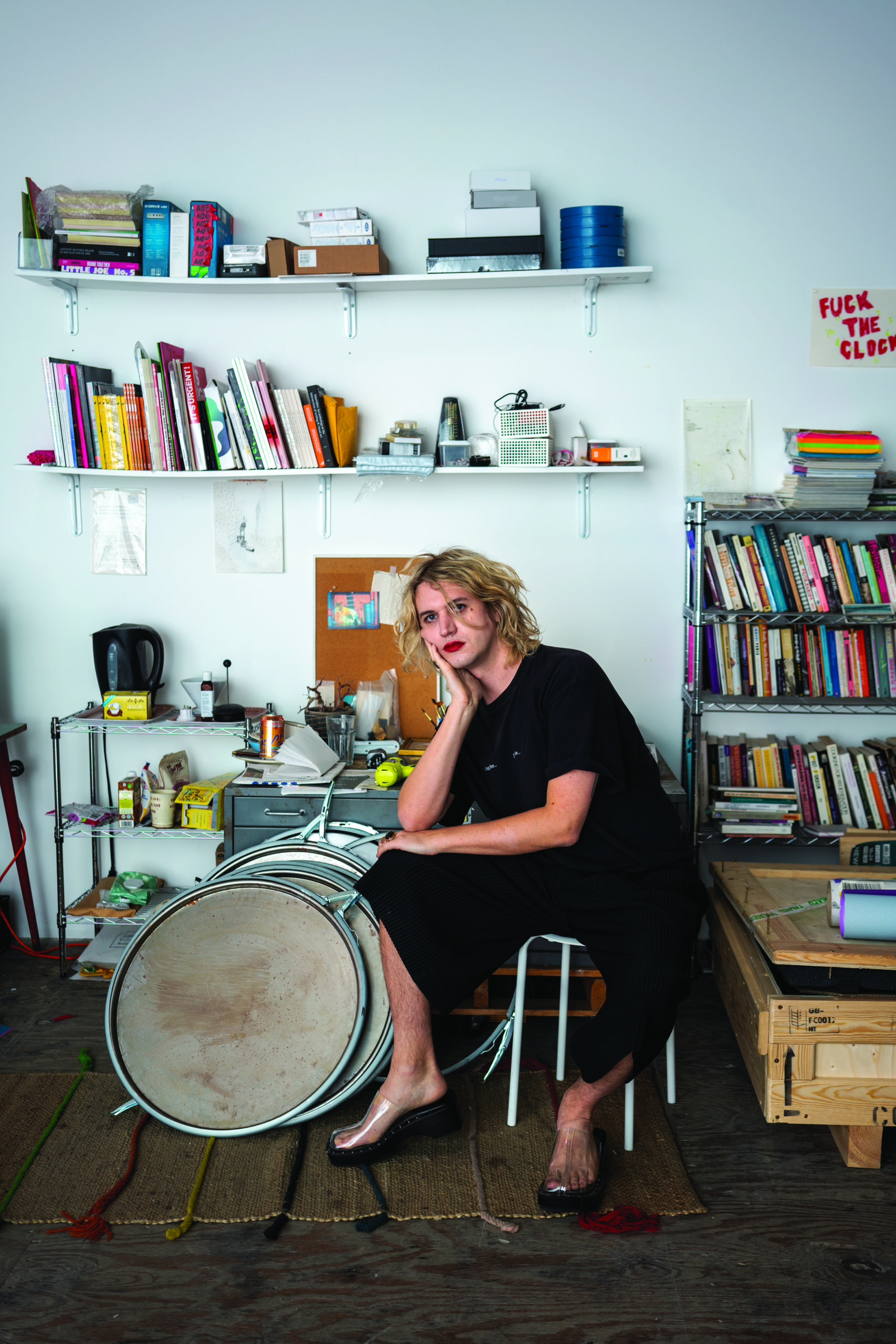
Photographed by Gillian Steiner.
Age: 35 Medium: Installation, video, poetry Birthplace: Bognor Regis, United Kingdom Hometown: Los Angeles
Describe your studio/work practice.
A lot of procrastination, a lot of staring into space, a lot of crying in my car.
What is the most ambitious work you’ve made in the past five years?
Making the ceilings of the Serpentine Galleries in London drip with acid.
What’s the biggest risk you’ve taken as an artist?
No plan B.
When was your first trip to Venice?
I went one year in the dead of winter with my best friend to catch the final week of the Biennale. We ate a lot of pizza a fiamma, drank a lot of one-euro wine, and got lost a lot. Half the works were turned off, broken, or covered in cobwebs, and it was totally magical.
Which artists influenced you at the start of your career?
Rebecca Horn and Kathy Acker.
What are your biggest influences outside of the art world?
Time, death, language, light, violence. They’re unavoidable.
How has the art world changed in the past few years?
We’re holding it to a higher standard. I’d like to see more of that. I’m always chasing after more rigor. What can art do or offer that is beneficial in the current apocalyptic state of the world? Usually, if I realize I’m looking for art to do something specific, or to offer something beneficial, it’s a sign that I’m looking for the wrong things in art.
If you could show with any artist living or dead, who would it be? Nancy Spero. Failing that, all of my friends and lovers.
What is your favorite film of all time? It’s always changing. I recently watched Come Back to the 5 & Dime, Jimmy Dean, Jimmy Dean. Cher and Karen Black in Texas! The final few scenes were incredible.
Was Andy Warhol an influence?
It’s hard to say no—the car crashes and electric chairs, the shadow pieces, the oxidation paintings. It’s all there.
———
VIRGINIA OVERTON
Age: 50 and counting. Medium: Wood, metal, glass, and anything I come across that feels compelling to me. Birthplace: Nashville Hometown: Brooklyn.
Describe your studio/work practice.
Messy.
What is the most ambitious work you’ve made in the past five years?
My general approach to making work keeps me striving to stay as open as possible during the making process so that I can make discoveries as I move along.
What’s the biggest risk you’ve taken as an artist?
Being one.
When was your first trip to Venice?
The first time was about 15 years ago. Arriving there was like landing in another world. I was rapt from the quality of light bouncing off the water that floods the city and the layers of materials that make up the buildings, showing the evolution of the architecture and the hands that built it.
Which artists influenced you at the start of your career?
That’s tough to answer, either because there are too many artists to list or because I don’t know when my career started. I guess it started with exposure as a kid to art in museums and books. I didn’t like to read but I loved to look at pictures. What are your biggest influences outside of the art world? I’m influenced by the availability of materials, found or otherwise, and the ingenuity of the ways people utilize them in everyday life.
Do you think the art world has changed in the past few years?
Probably, though I haven’t kept a close watch on it. I guess a changing environment is healthier than a stagnant one, although the motivations of everyone making the changes is the bigger question. Still, change and invention have always been at the core of art-making. I hope that stays intact.
———
LU YANG
Age: 37. Medium: Computers, multi- media, game engines, CG. Hometown: Shanghai.
Describe your studio/ work practice.
My studio is cozy. I create things in a virtual world.
What is the most ambitious work you’ve made in the past five years?
Can’t really tell, each work is special to me. I’ve been working on my DOKU series for the past two years. DOKU is my digital reincarnation. I’m working on DOKU’s first film now, which is the most important and ambitious at the moment.
What’s the biggest risk you’ve taken as an artist?
There are all kinds of difficulties and obstacles in being an artist, and I believe there will be more in the future. It’s just part of the job.
When was your first trip to Venice?
I attended the Chinese Pavilion at the 2015 Venice Biennale. I remember the crowds were all over the place. There were many stalls selling selfie sticks; it was a tourist destination.
Which artists influenced you at the start of your career?
I usually don’t pay much attention to contemporary art. My interests are outside of it. My work is influenced by Buddhist ideas, as well as philosophy, psychology, and neuroscience. I am most concerned with these core ideas, and the expression is just a shell to wrap these ideas.
I don’t think I am an artist. I am just a human being alive in this stage asking questions and thinking in this world.
What can art do or offer that is beneficial in the current apocalyptic state of the world?
To be honest, I’m not really sure. I used to wonder what my work could bring to the world. But I get a lot of feedback from audiences who think they’ve gained new perspectives from it. And I’ve absorbed a lot of information from the work of other creators that has helped me, in literature, film, theater, philosophical ideas, and music. These creations have brought me a lot of goodness.
Was Andy Warhol an influence?
Never.
———
Production: Paige Viti, @pkv15 Born Productions

